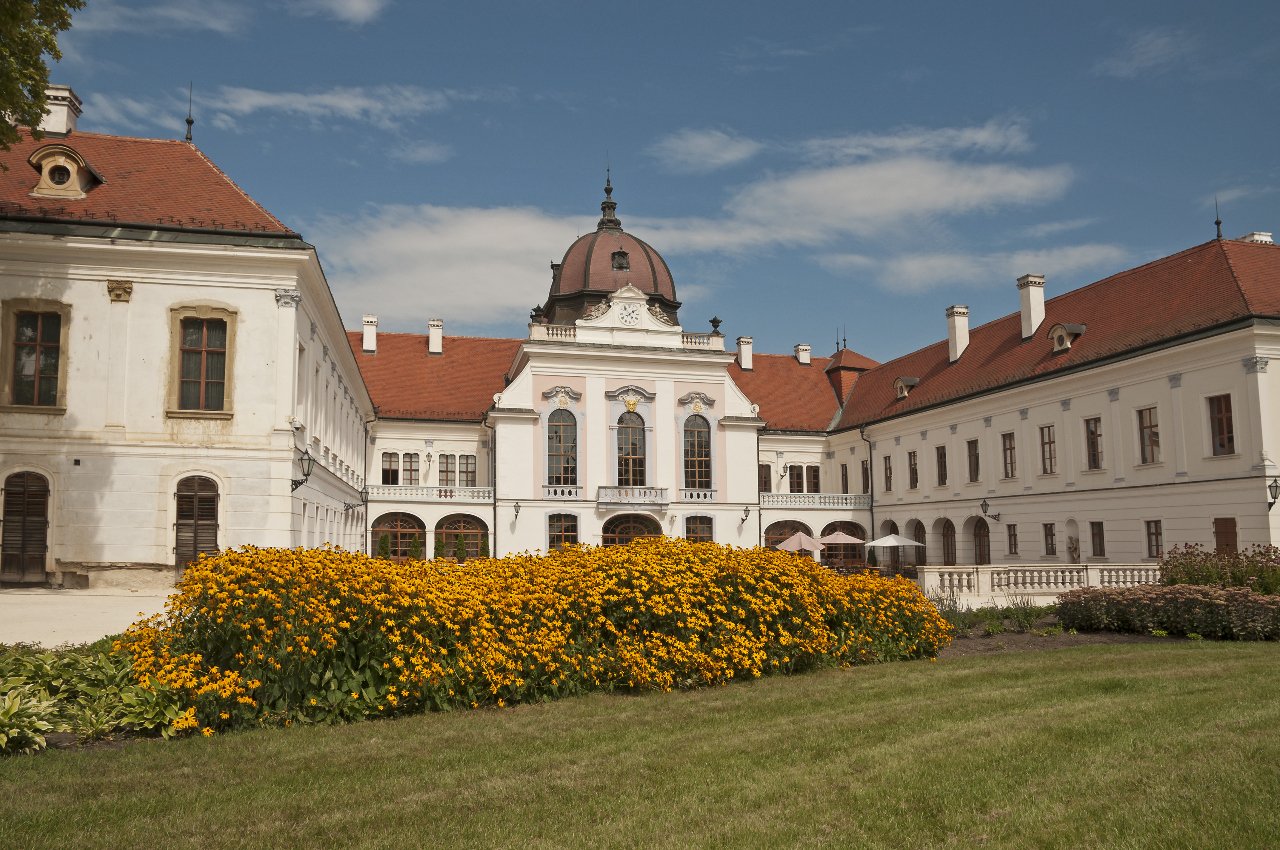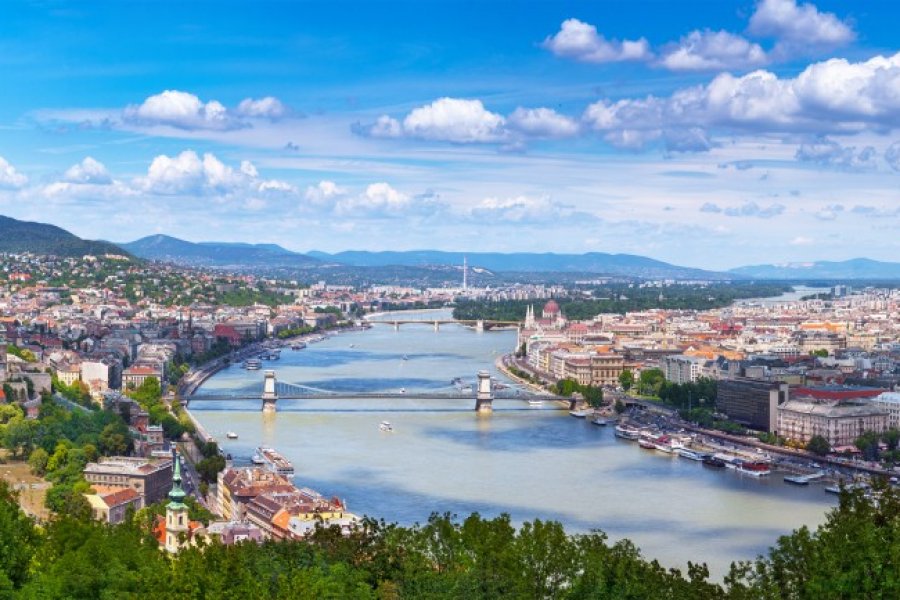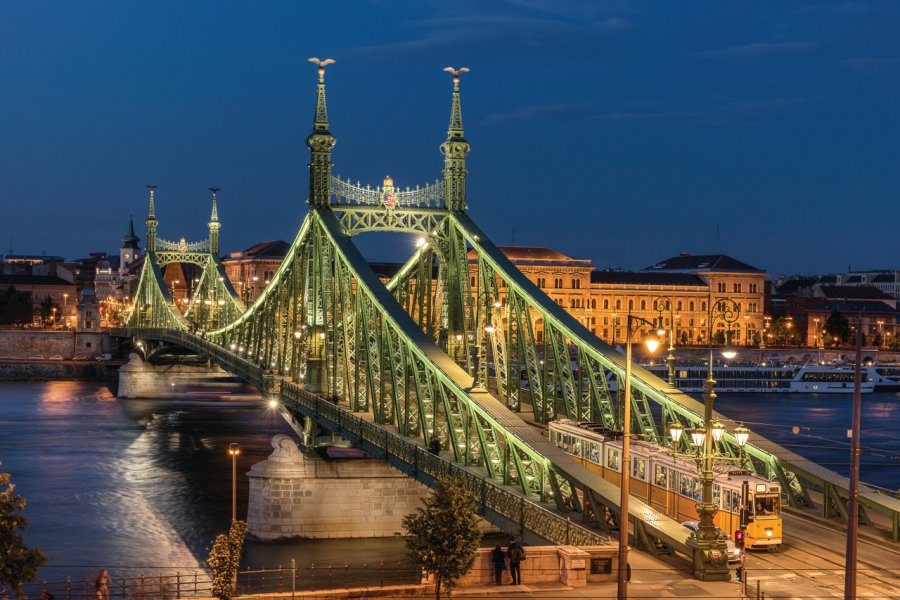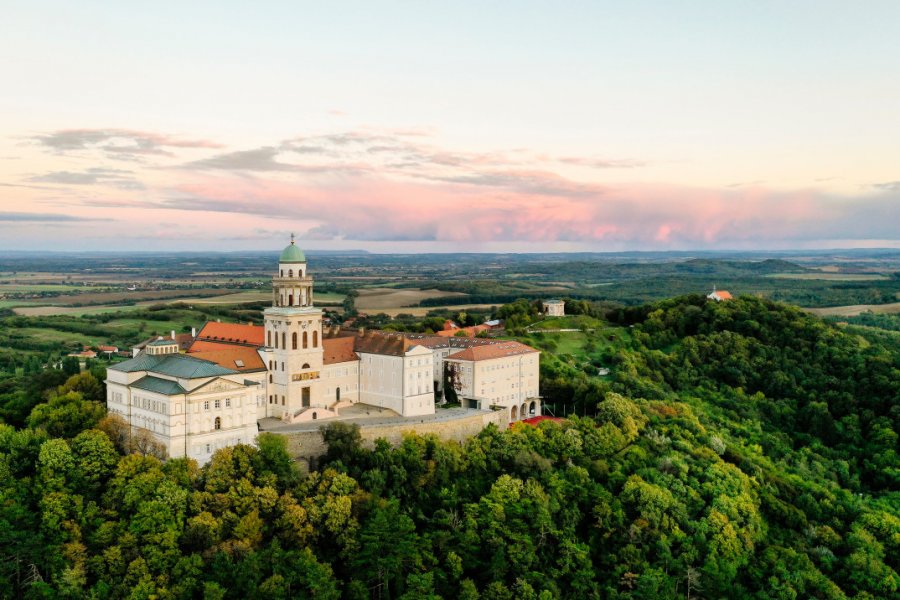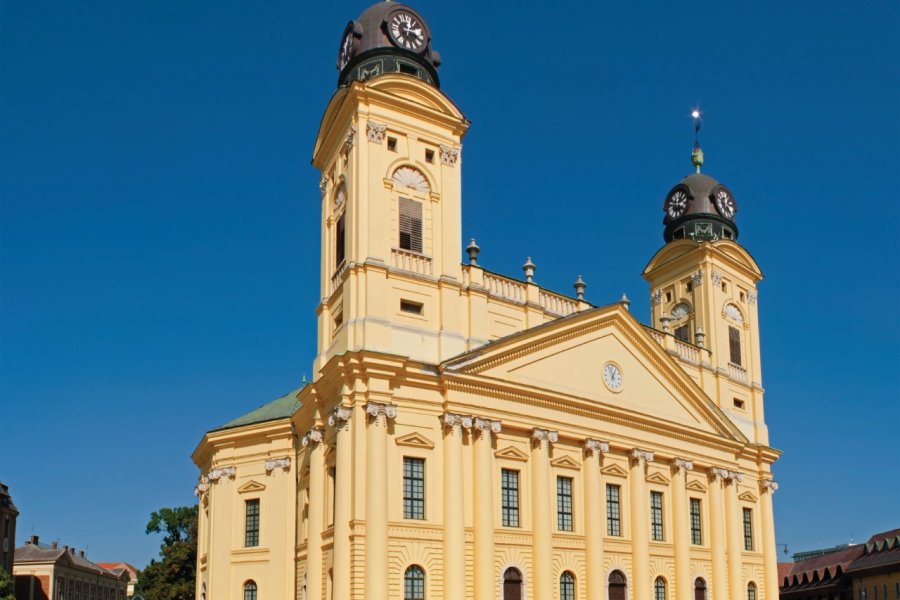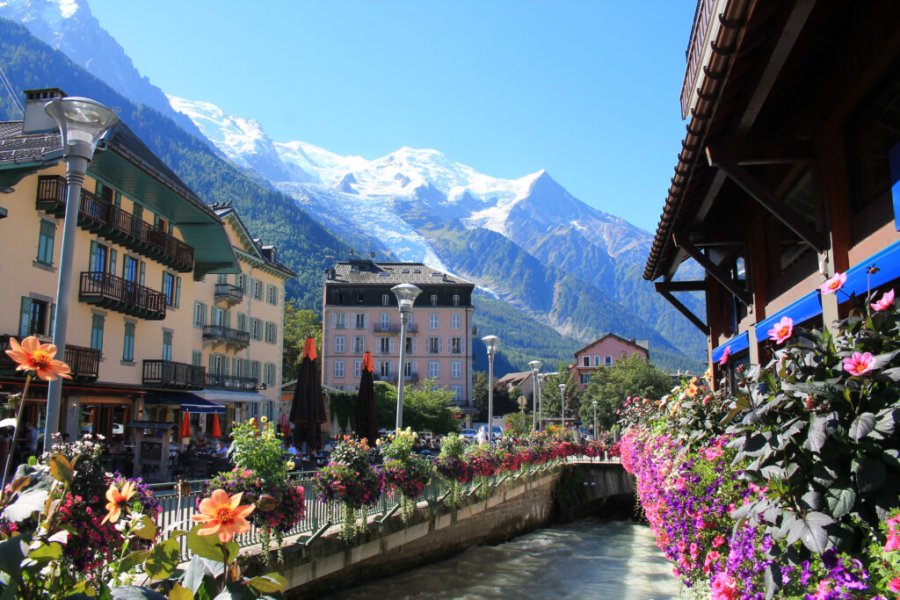The Tour of Hungary
Highlights of the trip
During your stay you can enjoy the following highlights: Culture / Heritage, Faune and flora, Discovery, Adventure / Sports & Leisure, Free time, Relaxation / Well-being.
Best times to go
The best time(s) to go is/are : Printemps, Eté, Automne, Hiver.
Petit Futé
Where to stay in : Sopron ?
The map of your stay "The Tour of Hungary"
Detail of the stay : The Tour of Hungary
How to get there - Sopron
Buda, the castle district and Mount Gellért
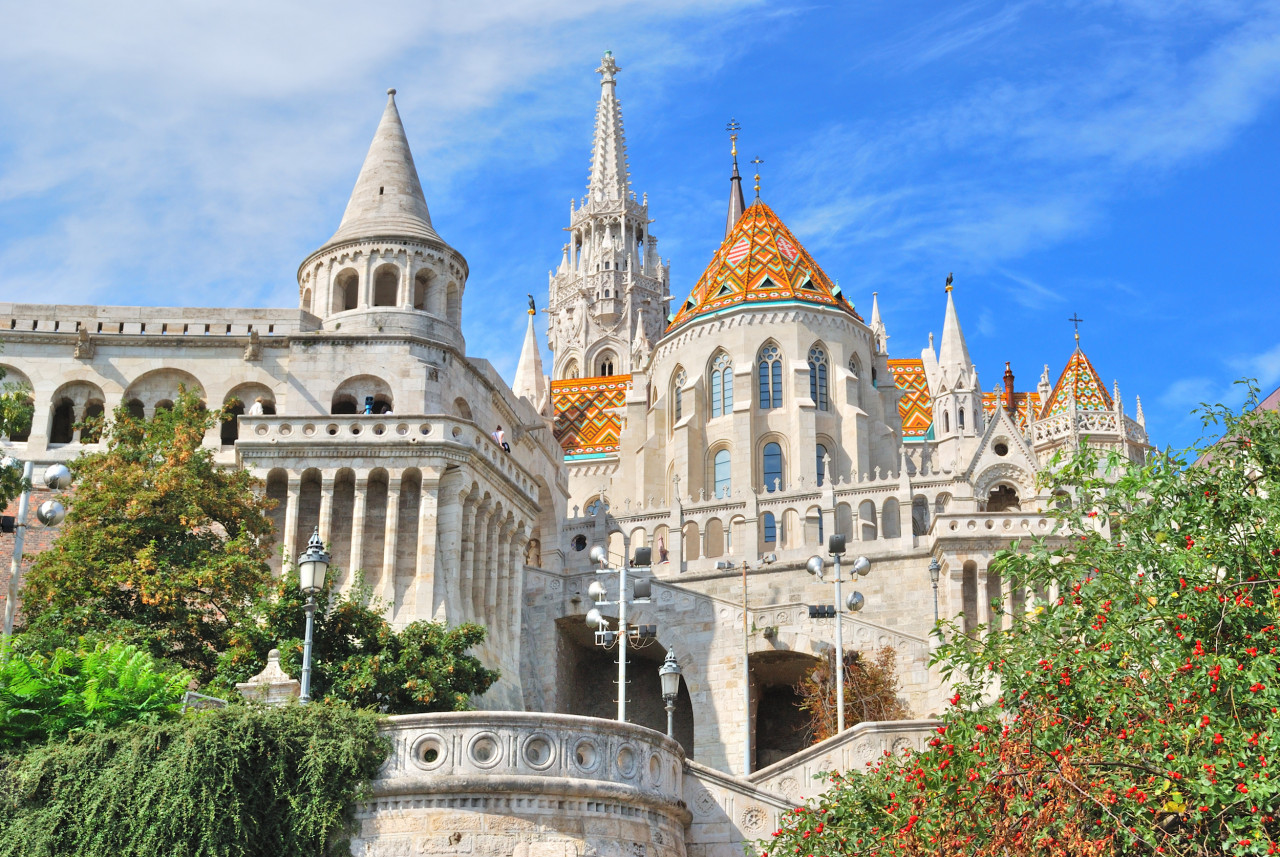
Steps: Budapest
Buda, the castle district and Mount Gellért. Visiting Budapest means meeting three cities, Buda, Pest and Óbuda, which were only unified in 1873. The discovery of the historic soul of the capital is centred around the castle (Várhegy) and its green neighbour, Mount Gellért (Gellérthegy).
From Deák tér, go to Széchenyi Square (formerly Roosevelt Square) via József Attilla Street, one of Hungary's greatest poets, and discover Gresham Palace and the Academy of Sciences. In front of you opens the Chain Bridge (Lánchíd), the oldest bridge in the city. Cross it to reach Clark Ádám tér, from where the funicular takes you to the Royal Palace. You can also reach the castle by foot via the King's Staircase (Király Lépsc). From the Royal Palace, which houses the Széchenyi National Library and two museums (the Hungarian National Gallery and the City History Museum), you will discover a panoramic view of Pest and all the city's bridges. You can see the Castle Theatre (Várszínház, now Nemzeti táncszínház) in Rococo style on Dísz tér Square, walk along the old ramparts to the National Archives and Bécsi kapu, the gateway to Vienna, where the main streets of the hill meet. Walk past the Lutheran temple and the Mary Magdalene Tower, then take Országház Street to Mathias Church (Mátyás Templom), whose roofs are covered with coloured tiles and in which the Habsburg kings were crowned. In front of the church, the Baroque column of the Holy Trinity, which was erected against the plague, marks the highest point on the castle hill.
Behind the church stands the Fishermen's Bastion, named after the League of Danube Fishermen who were to defend this part of the ramparts, as well as the statue of St Stephen, the founding king of Hungary.
Stroll through the streets surrounding the church. Let yourself be tempted by one of the typical cakes of the famous Ruszwurm pastry shop. Come down from the hill by the stairs of the Fishermen's Bastion, then by the countless stairs that lead to Batthyány Square. Get on the tramway No. 19 along the Danube on the Buda side and get off at the Szabadság híd (Freedom Bridge) at Szent Géllert tér station, you are in the square of the famous Art Nouveau style Hotel Gellért, which has a spa (the Gellért baths) and a very popular wave pool
After having taken a look at the entrance to the baths, you can climb Mount Gellért by the small paths to reach the citadel, the majestic Statue of Liberty at the top. Go down again enjoying the view of the Danube and cross the Liberty Bridge to return to the banks of Pest.
Places of interest : MUSÉE D'HISTOIRE DE LA VILLE (VÁROSTÖRTÉNETI MÚZEUM) PLACE SZÉCHENYI (SZÉCHENYI TÉR) TEMPLOM UTCA / TEMPLE LUTHÉRIEN (EVANGÉLIKUS TEMPLOM) PONT DE LA LIBERTÉ (SZABADSÁG HÍD) PONT DES CHAÎNES (SZÉCHENYI LANCHÍD) PALAIS GRESHAM (GRESHAM PALOTA) ACADÉMIE HONGROISE DES SCIENCES (MTA) GALERIE NATIONALE (MAGYAR NEMZETI GALÉRIA) ÉGLISE MATHIAS (MÁTYÁS TEMPLOM) COLONNE DE LA TRINITÉ (SZENTHÁROMSÁG OSZLOP) TOUR MARIE-MADELEINE (MÁRIA MAGDOLNA TORONY) PORTE DE VIENNE (BÉCSI KAPU) BASTION DES PÊCHEURS (HALÁSZ BÁSTYA) PLACE BATTHYÁNY (BATTHYÁNY TÉR) PALAIS ROYAL (BUDAVÁRI PALOTA)
Walk in classic Pest

Steps: Budapest
From Deak tér, reach Place Vörösmarty and the famous Café Gerbeaud and head for Dunakorzó, the walk along the Danube, from where you can enjoy an exceptional view of the river, the castle hill and the citadel. Follow the korzó to Petöfi Square. You will pass in front of the Vigadó concert hall, the Serbian Orthodox Baroque church and arrive at the foot of the statue of Sándor Petöfi. Turn left to take the Pianista utca, where the former Faculty of Arts is located, and join Ferenciek Square. On this square, take a look at the very beautiful passage of Paris built in 1909 and which mixes styles (not always open). Cross over to the other side of Ferenciek Square. After the Franciscan church and the University Library, you can take a break at the famous Café Central (Centrál Kávéház), an 1887 literary and artistic café restored in a 1920s style. Join the pedestrian street Váci by Arany street to the Grande Halle, the largest central market of the late 19th century. Also admire the neo-Renaissance style university of economics built by the same architect as the halls. Head for the main boulevard towards Kálvin Square and Ráday Street, lined with café terraces, then go to the Hungarian National Museum (Magyar Nemzeti Múzeum) founded by Count Széchenyi in 1802. Continue to Astoria Square where the famous hotel of the same name is located. A little further on, on the right side of the boulevard, begins the Jewish quarter and the largest synagogue in Europe. Then return to the boulevard to reach Deák Square and go to the colossal St. Stephen's Basilica, inspired by the Neo-Renaissance era. Take Október Street 6 to the main Freedom Square, Szabadság tér, where there is a monument honouring the Soviet liberators of 1945 and the impressive stock exchange building, formerly the headquarters of Hungarian TV. From this square, go through Honvéd Street and Hold. You will discover Art Nouveau buildings (Hungarian Art Nouveau House, Postal Savings Bank) and reach the Parliament (Országház). Also on Kossuth Lajos Square (Parliament Square), the Ethnographic Museum and the Ministry of Agriculture. On the banks of the Danube, you can take the tramway No. 2 along the Danube to return to Deák tér.
Places of interest : MUSÉE ETHNOGRAPHIQUE (NÉPRAJZI MÚZEUM) PLACE KOSSUTH (KOSSUTH TÉR) PARLEMENT (ORSZÁGHÁZ) ÉGLISE ORTHODOXE SERBE (SZERB ORTODOX TEMPLOM) CAISSE D'ÉPARGNE (ORSZÁGOS POSTATAKARÉKPÉNZTÁR) PLACE DE LA LIBERTÉ (SZABADSÁG TÉR) MAISON BEDŐ (BEDŐ-HÁZ) ÉGLISE FRANCISCAINE (FERENCES TEMPLOM) PLACE VÖRÖSMARTY (VÖRÖSMARTY TÉR) GRANDE SYNAGOGUE (NAGY ZSINAGÓGA) MUSÉE NATIONAL HONGROIS (MAGYAR NEMZETI MÚZEUM) CITADELLE (CITADELLA) REDOUTE DE PEST (VIGADÓ)
Andrássy út and Városliget
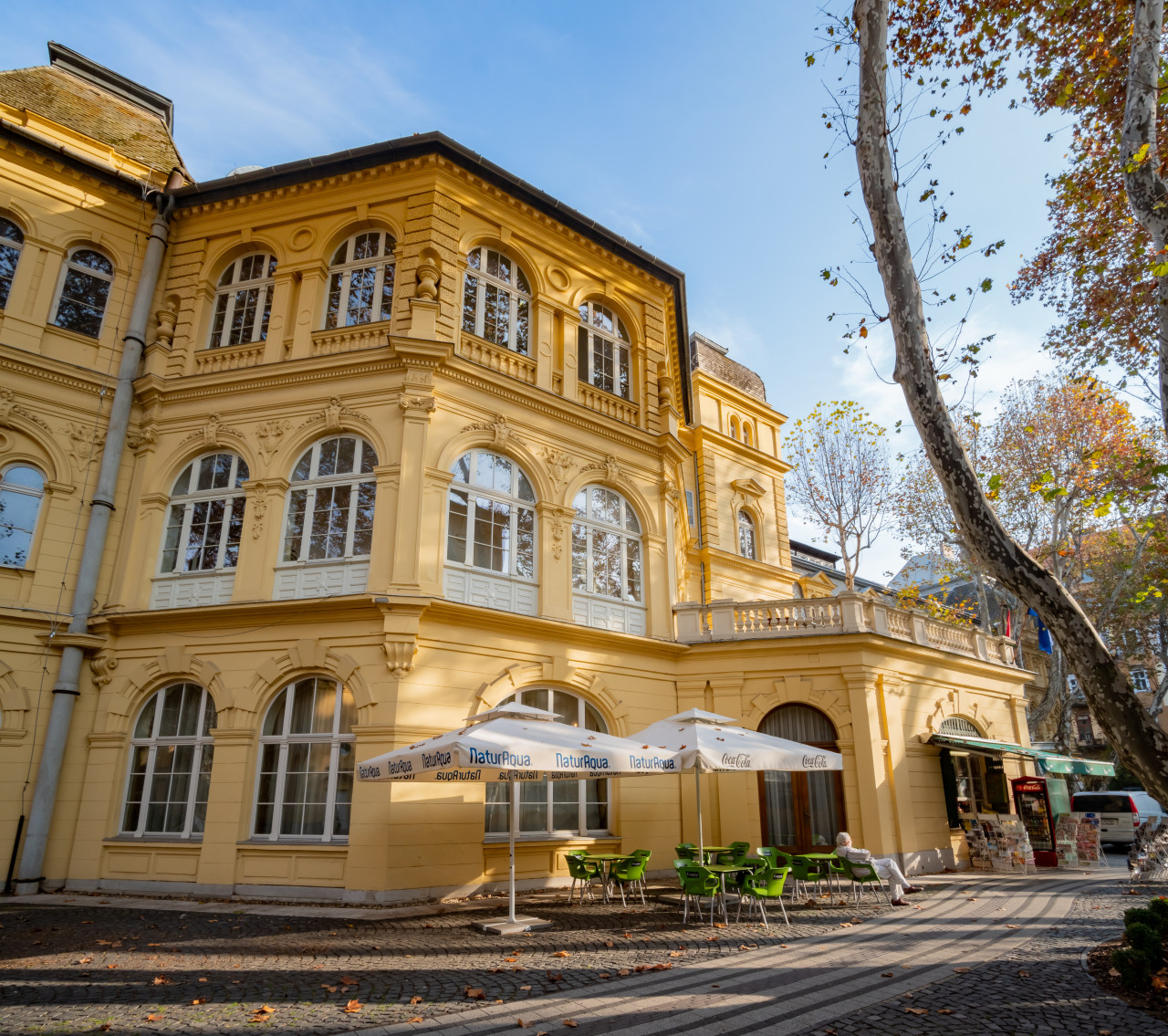
Steps: Budapest
The most elegant avenue in Pest, starting in Deák tér, extends almost three kilometres to Bois-de-la-Ville. On your left, you will see the Hungarian National Opera opposite, the Dreschler House. A little further on, the pastry shop Művész and a famous tea room decorated with mirrors in golden frames. At the first major crossroads with Nagymező street is Budapest's Broadway with the Thália Theatre, the Operetta Theatre, the Moulin Rouge and the Mai Manó House (Museum of Photography). Continuing on to Andrássy út, you arrive at Franz Liszt Square, which is full of cafés and on which there is the statue of the musician, the most Hungarian of Austrians, and the Academy of Music. Admire the very beautiful entrance of this academy and enter the interior, now open for visits and concerts, it regained its full splendour in 2013.
Andrássy Avenue then leads to a large octagonal crossroads called Oktogon and a popular meeting place. Continue on the avenue, while taking a look on both sides lined with magnificent private mansions, most of which house embassies. You will pass in front of the House of Terror and notice the Kodály körönd Square for its magnificent painted facades that reflect the architectural refinement of Budapest. At the end of the avenue, you will arrive at the main square of the Heroes (Hosök tere). On the left side, the Museum of Fine Arts, on the right left, the National Gallery of Modern Art. Enter the Bois-de-Ville where you can relax and refresh yourself by the shores of a canoeing lake transformed into an ice rink in winter. You will find the famous Széchenyi (Széchenyi Fürdo) baths, a Art Nouveau zoo classified as a historical monument, an eclectic castle parc d'attractionsand a castle (château de Vajdahunyad). Near the baths, you can board Budapest's oldest metro (földalatti) and return to Deák tér.
Places of interest : MUSÉE DES BEAUX-ARTS (SZÉPMŰVÉSZETI MÚZEUM) CHÂTEAU DE VAJDAHUNYAD GALERIE D'ART MODERNE (MŰCSARNOK) PARC D'ATTRACTIONS (HOLNEMVOLT PARK, EX-VIDÁM PARK) BOIS-DE-LA-VILLE (VÁROSLIGET) / MILLENIUM HÁZA PLACE DES HÉROS (HŐSÖK TERE) OPÉRA NATIONAL HONGROIS MAISON DE LA TERREUR (TERROR HÁZA) MAISON MANÓ MAI (MAI MANÓ HÁZ) ZOO (ÁLLATPARK)
Szentendre, picturesque Serbian city
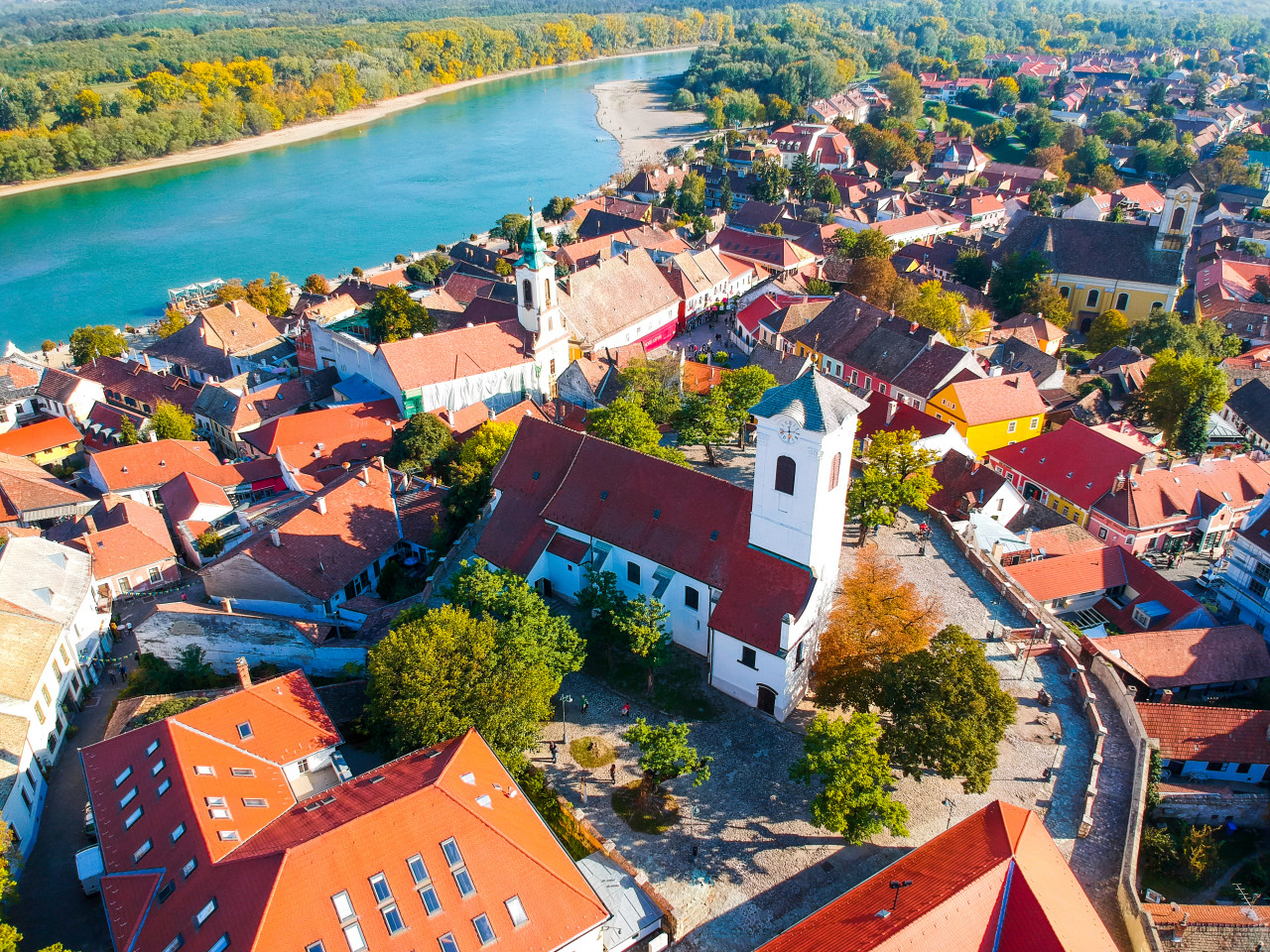
Steps: Budapest
At the Batthyány tér metro station (Buda), take the "Hév" suburban train to the Szentendre terminus. 18 km from Budapest, we discover a unique old village of artists. The old colourful 18th century houses, alleys and terraces give this city an astonishing Mediterranean atmosphere. Stroll through the alleys, discover the artist galleries, the many Orthodox churches and stop in the main square (Fotér). A pleasant walk through time and the Hungarian "Montmartre". On the outskirts of the city, the open-air museum brings together the most beautiful traditional houses of Hungarian popular housing.
The Danube curve
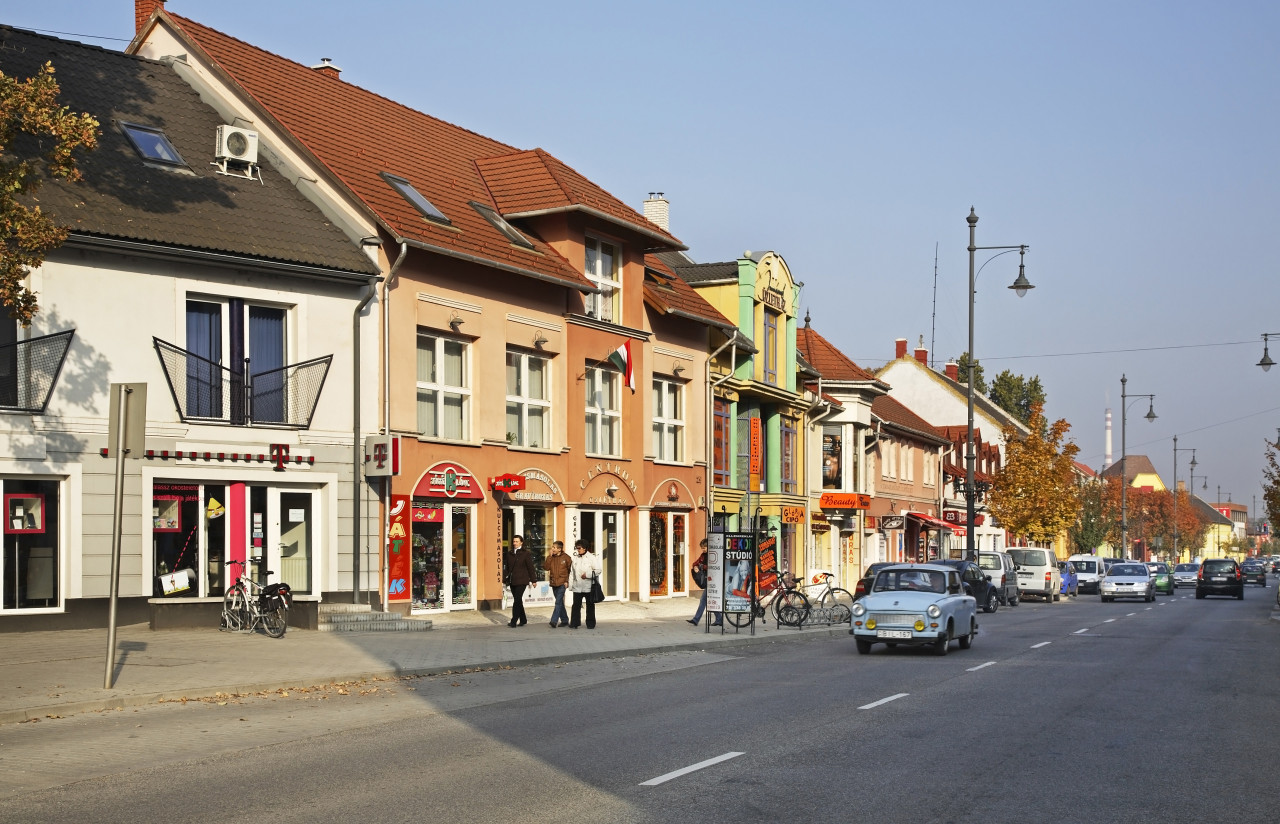
Steps: Tata
To the north of Budapest, the Danube is bending. This region is one of the most beautiful in the Danube.
By road n° 11, you will follow the Danube and arrive at Szentendre, a charming village of artists by the water. Walk through the village, soak up the Mediterranean atmosphere, just a few kilometres from the capital.
Continuing the road to the northeast, stop for a while in Vác, a baroque town on the left bank of the Danube. Continue to Visegrád and its citadel offering a unique view of the Danube loop. Esztergom, further north, the first capital of the Magyar kingdom is a pretty town, close to Slovakia, whose basilica and Christian Art Museum bear witness to its important role in the past
Leave the Danube to discover a charming historical city, Tata, famous for its 250 ha lakes and old water mills. For horse lovers, the Eszterházy stud farm is one of the most beautiful thoroughbred farms in Hungary.
Places of interest : BASILIQUE (BAZILIKA) MUSÉE D'ART CHRÉTIEN (KERESZTÉNY MÚZEUM)
Western Hungary
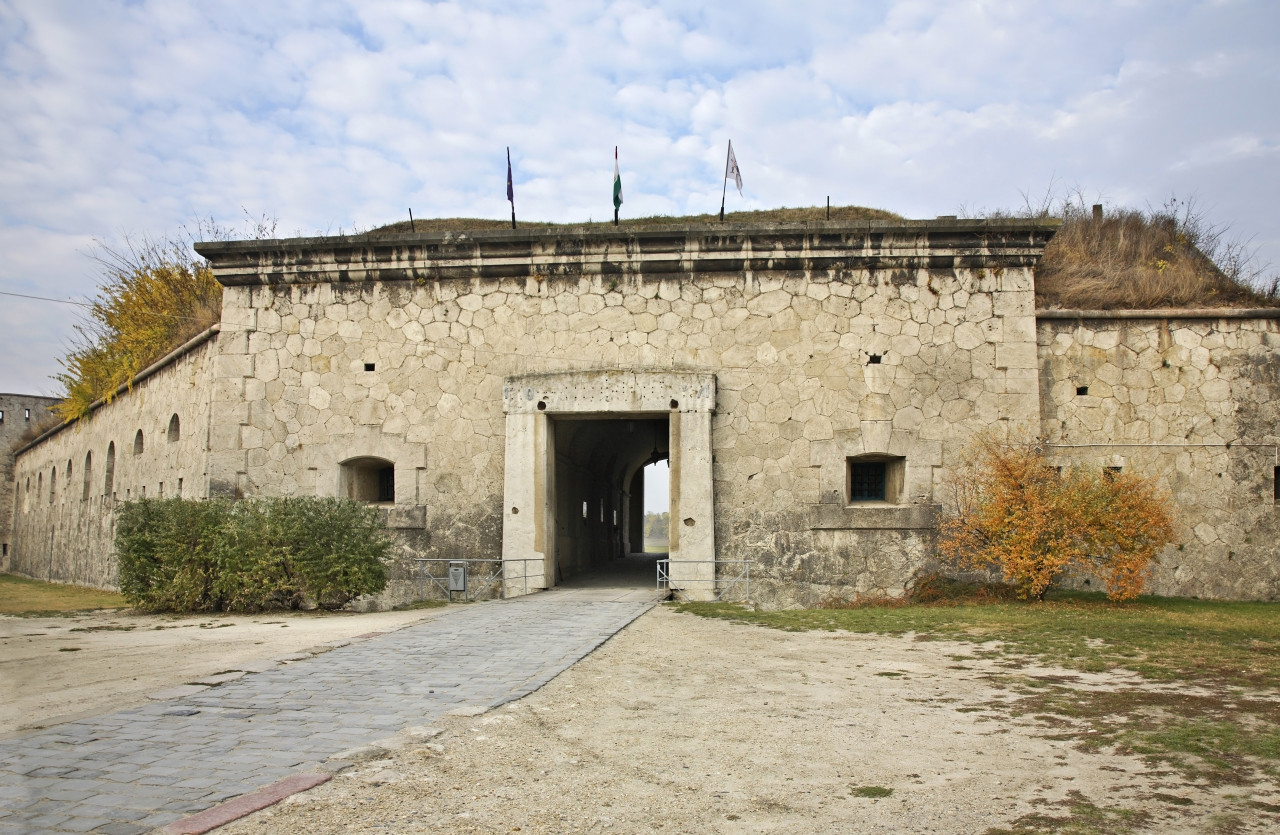
Steps: Komárom
On the western road, make a detour to Komárom, a spa town on both sides of the Danube that has been divided in two since the Treaty of Trianon (the northern part of the town is in Slovakia)
The 3 forts
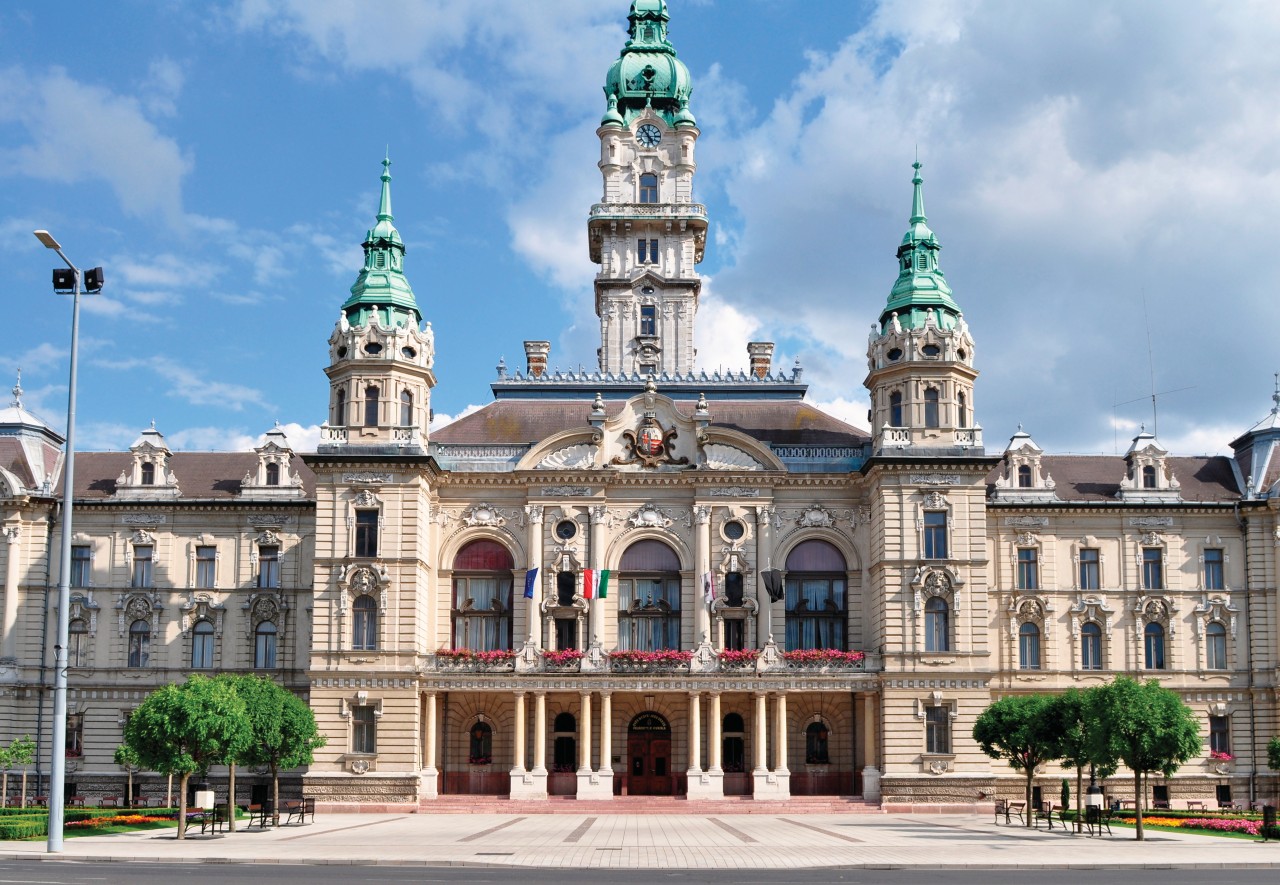
Steps: Komárom
Arrival in Komárom which includes three forts including the Monostori Erod, a huge fortress listed as a Historic Monument.
Places of interest : FORTERESSE MONOSTORI (MONOSTORI ERŐD)
Western Transdanubia

Steps: Győr
Gyor, the city of the three rivers at the confluence of the Danube, Rába and Rábca rivers, is rich in monuments that recall the history of Christian and Baroque Hungary. Take a walk in the pretty old town
Between abbeys and castles
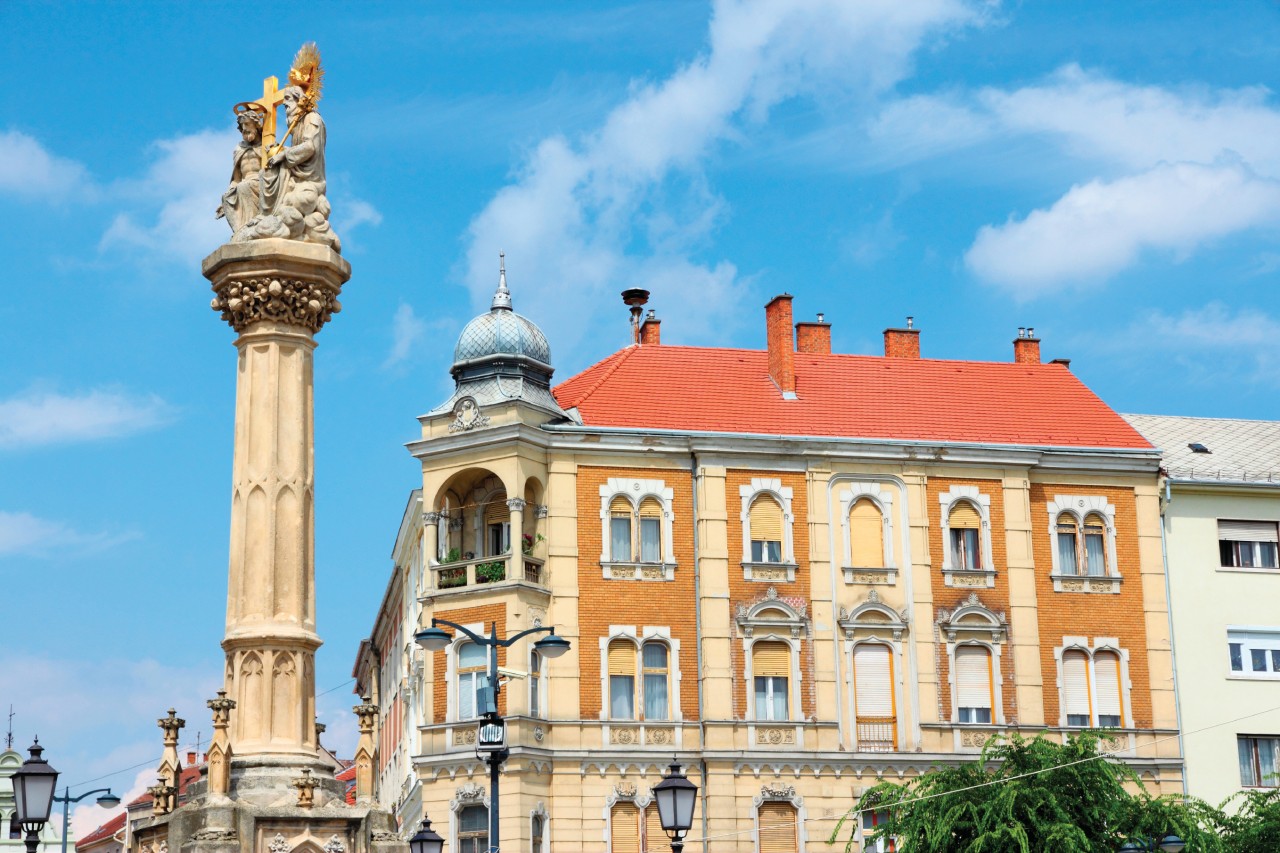
Steps: Sopron
In the vicinity of Győr, visit Pannonhalma Abbey, the most beautiful in the country. In the direction of Sopron, access Ferto Castle, a baroque jewel that belonged to the Eszterházy family. Located near Lake Ferto and rich in well-preserved historical monuments, the small town of Sopron is simply irresistible.
Places of interest : CHÂTEAU ESTERHÁZA (ESTERHÁZY KASTÉLY)
road to Szombathely
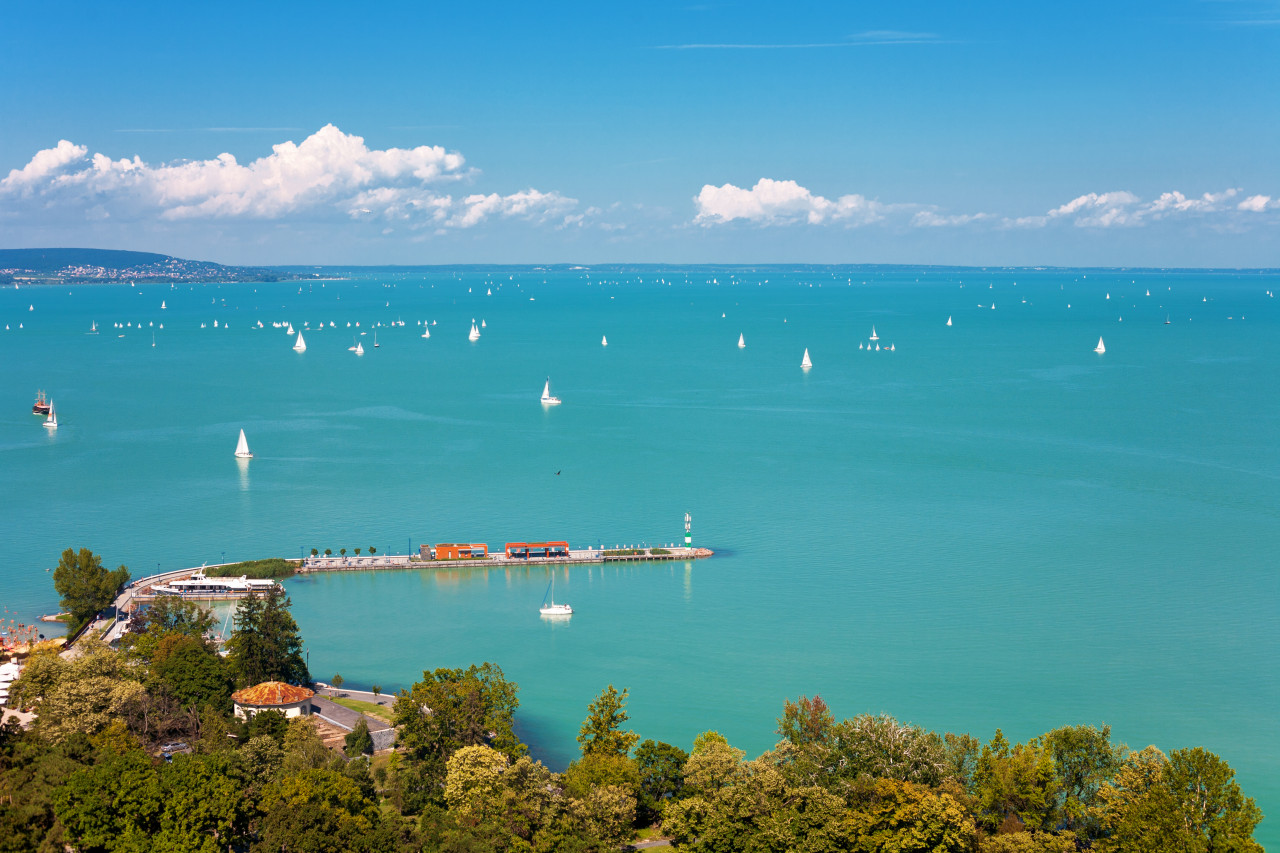
Steps: Sárvár
Continue on to Szombathely, taking the time to visit the Széchenyi manor house in Nagycenk and Kőszeg, famous for its medieval castle. Discover the splendour of the diversity of Hungarian Baroque and Gothic architecture.
Once you arrive in Szombathely, an old Roman city, nowadays rather modern and commercial, set sail for Lake Balaton.
Recommended thermal resorts: Balf, Bük, Gyor and Sárvár.
Places of interest : MANOIR DES SZÉCHENYI ET MUSÉE SZÉCHENYI (SZÉCHENYI KASTÉLY ÉS EMLÉKMÚZEUM) CHÂTEAU DE KŐSZEG (JURISICS-VÁR)
Around Lake Balaton
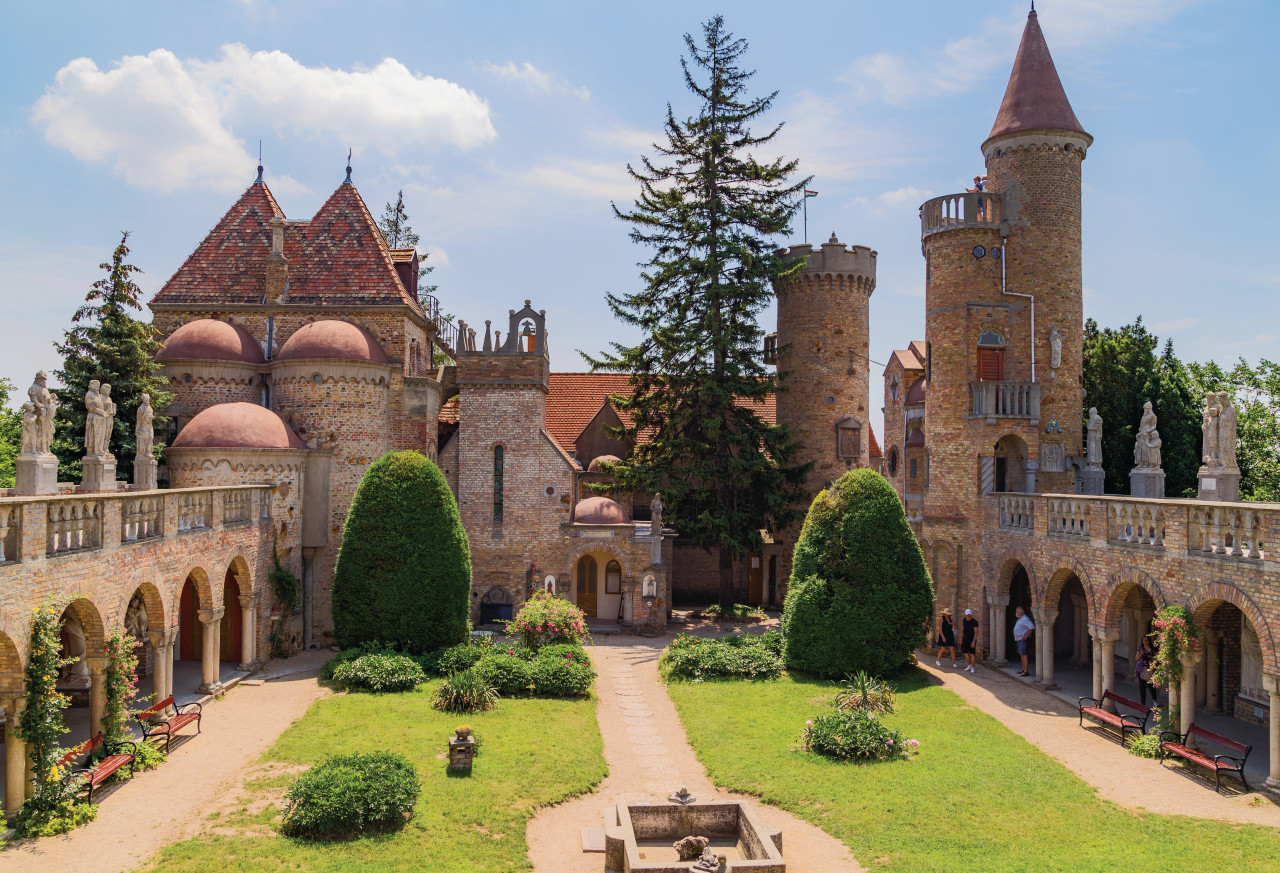
Steps: Lac Balaton
The largest lake in Europe, the Balaton, deserves its nickname as a "Hungarian inland sea". Renowned for its many spas and villages, Lake Balaton is the favourite resort of the Hungarians.
Baroque churches and palaces
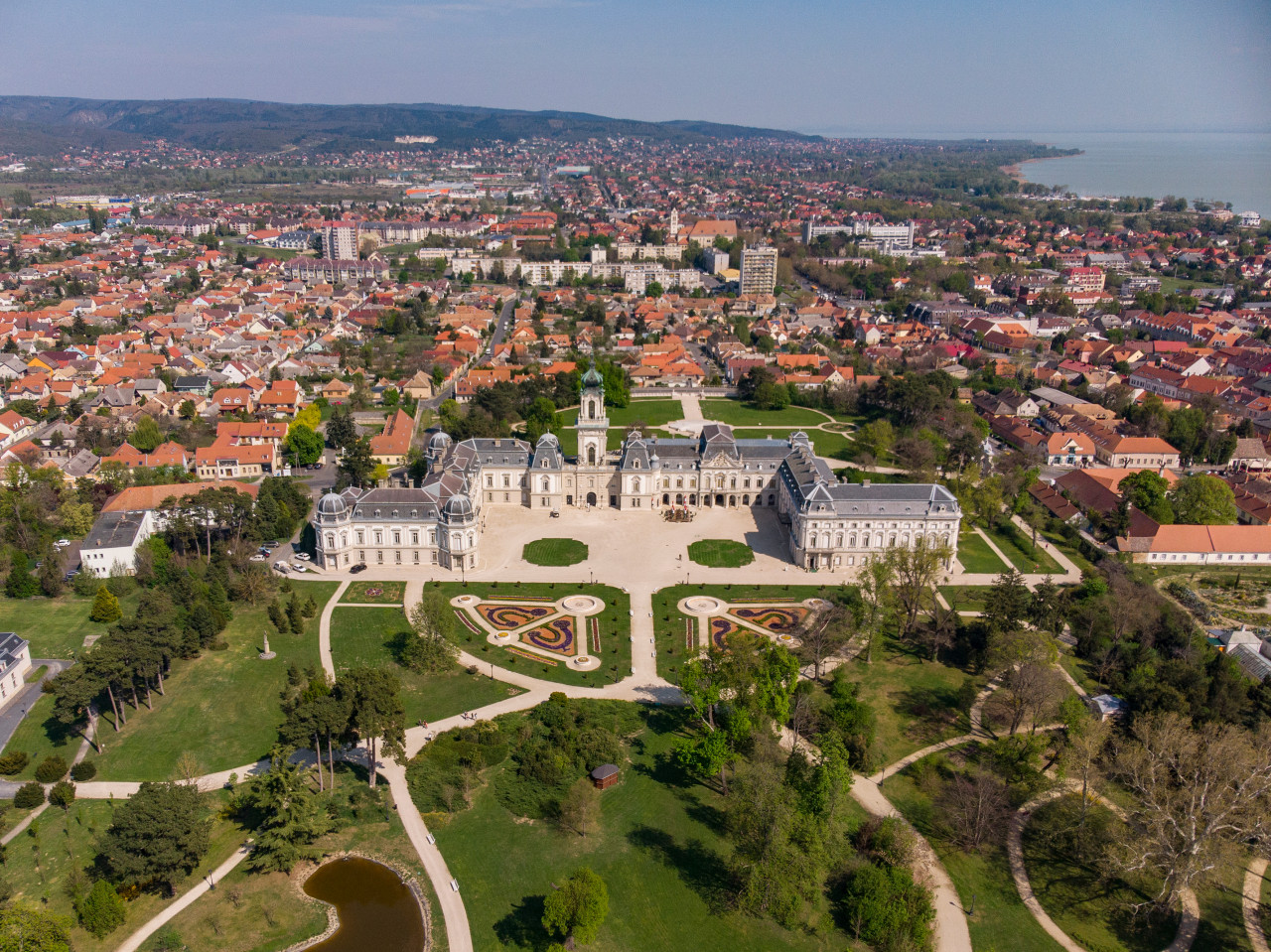
Steps: Veszprém
Starting from Székesfehérvár in the north of Balaton, go first to Veszprém where there are many Baroque churches and palaces. Passing through the Balatonfüred spa north of the lake, then take the road n° 71 to discover Tihany, a peninsula still wild, one of the most beautiful sites on the lake.
The largest hot water lake in Europe
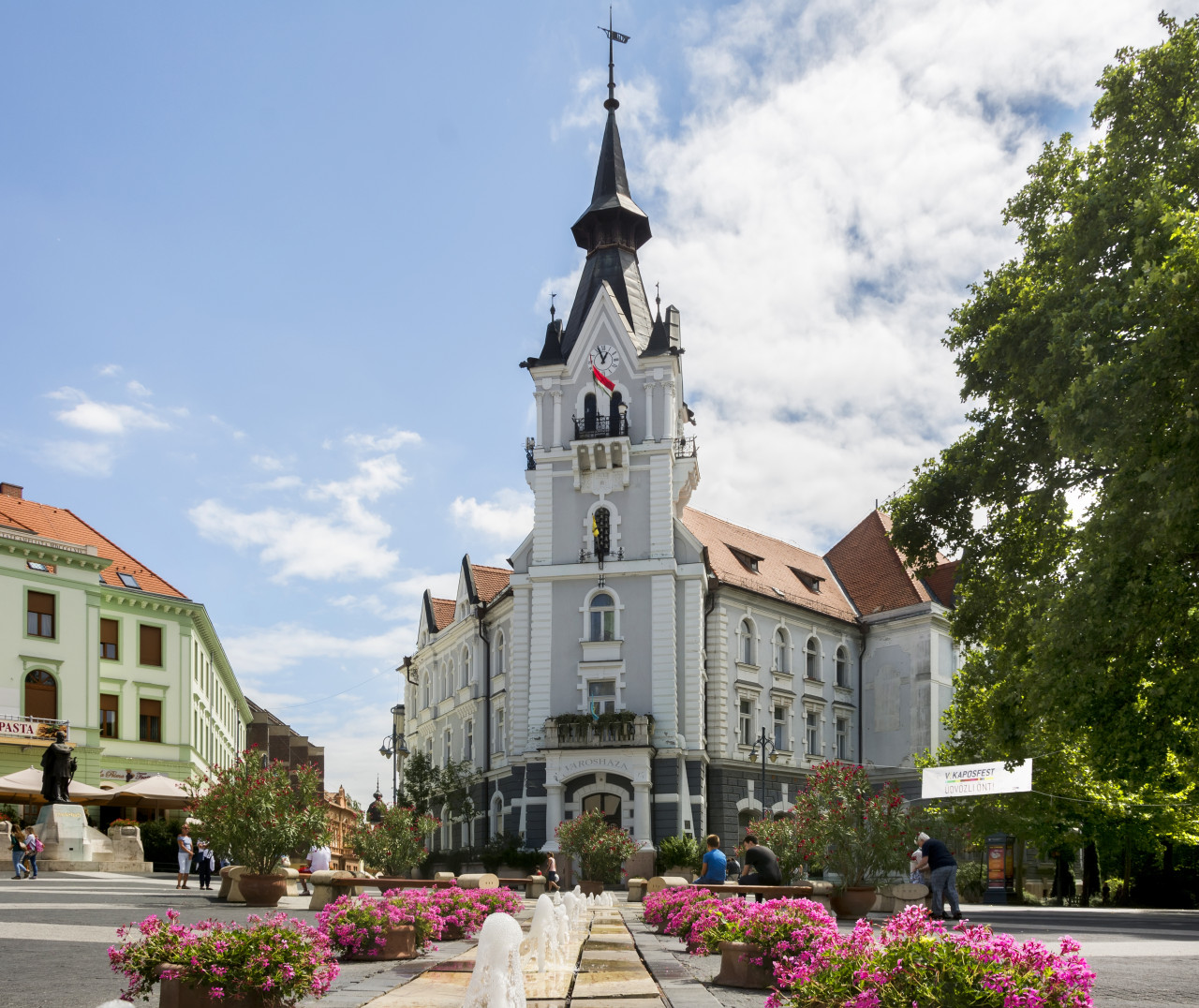
Steps: Hévíz
At the end of the lake, you will reach Keszthely and its huge Baroque castle. You can then easily go to Hévíz, the largest hot water lake in Europe where you can swim in the middle of the water lilies.
Spa resorts not to be missed: Héviz, Zalakaros, Alsópáhok
Places of interest : PALAIS DES FESTETICS (FESTETICS KASTÉLY)
Pécs and the vineyards of the South
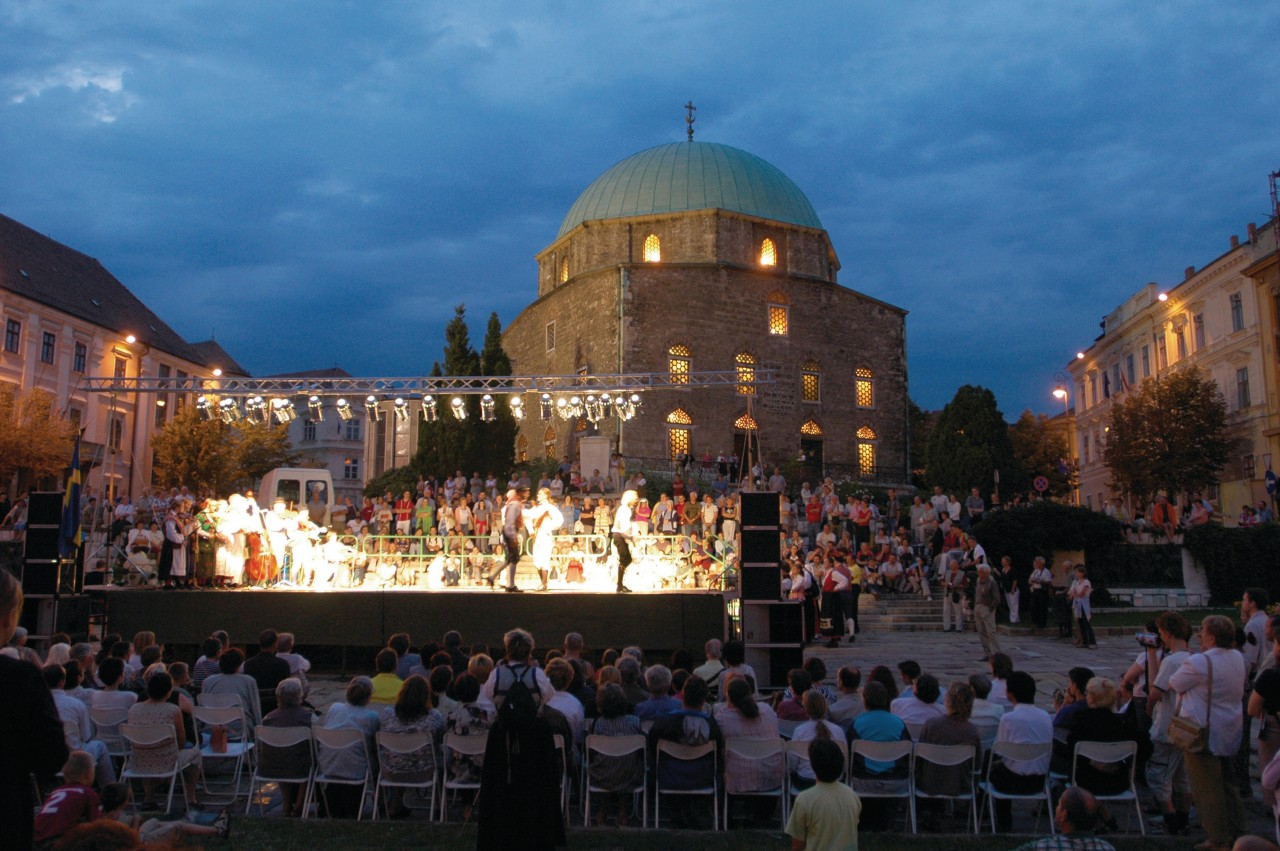
Steps: Kaposvár
After a pleasant stay by the lake, head to Kaposvár, a baroque and romantic city at the gateway to Southern Transdanubia
Pécs, European Capital of Culture in 2010
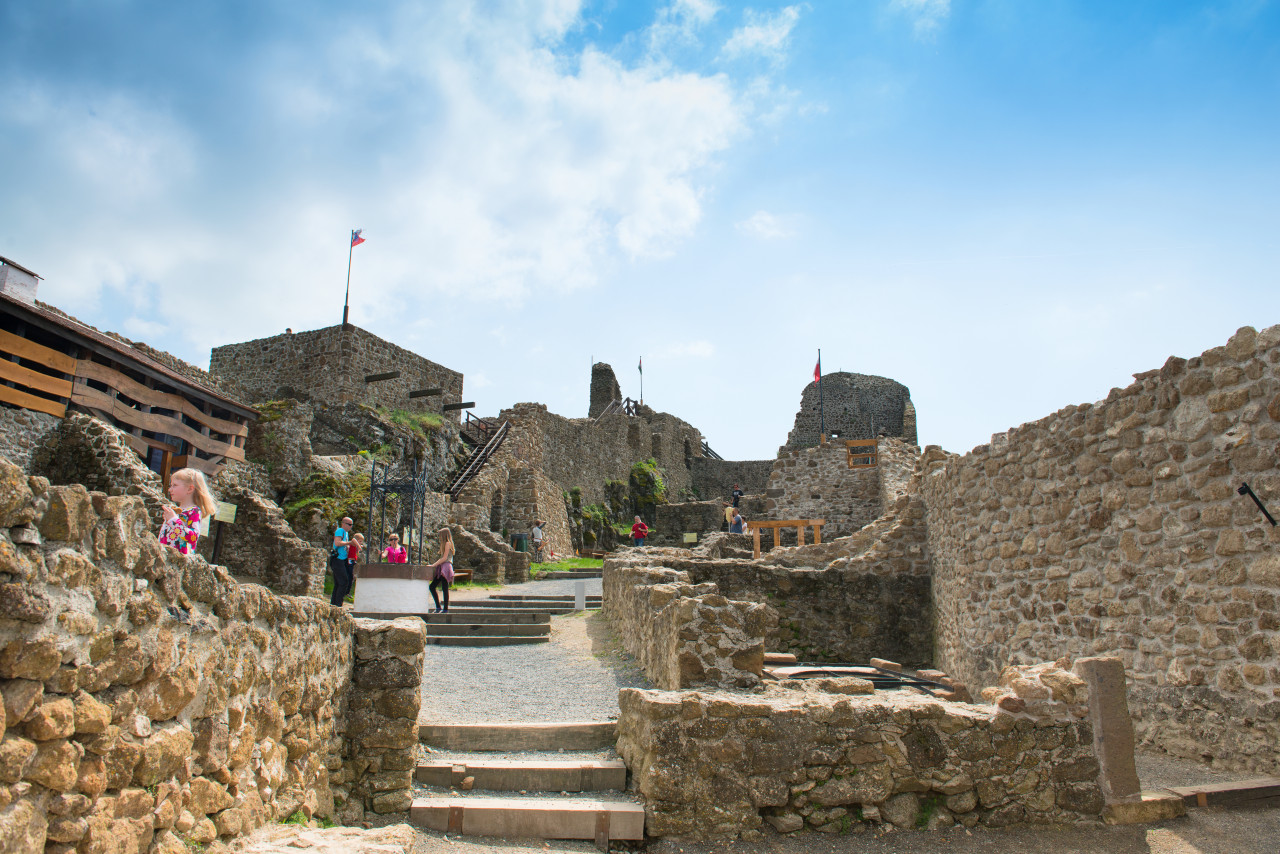
Steps: Pécs
The road stops again in Pécs, the largest urban area in the region, one of the most beautiful and charming cities in Hungary (European Capital of Culture in 2010).
Szigetvár Castle

Steps: Siklós
In the surroundings, you can visit Szigetvár Castle and the medieval castle of Siklós
Places of interest : CHÂTEAU DE SIKLÓS (SIKLÓSI VÁR)
In the heart of the vineyards
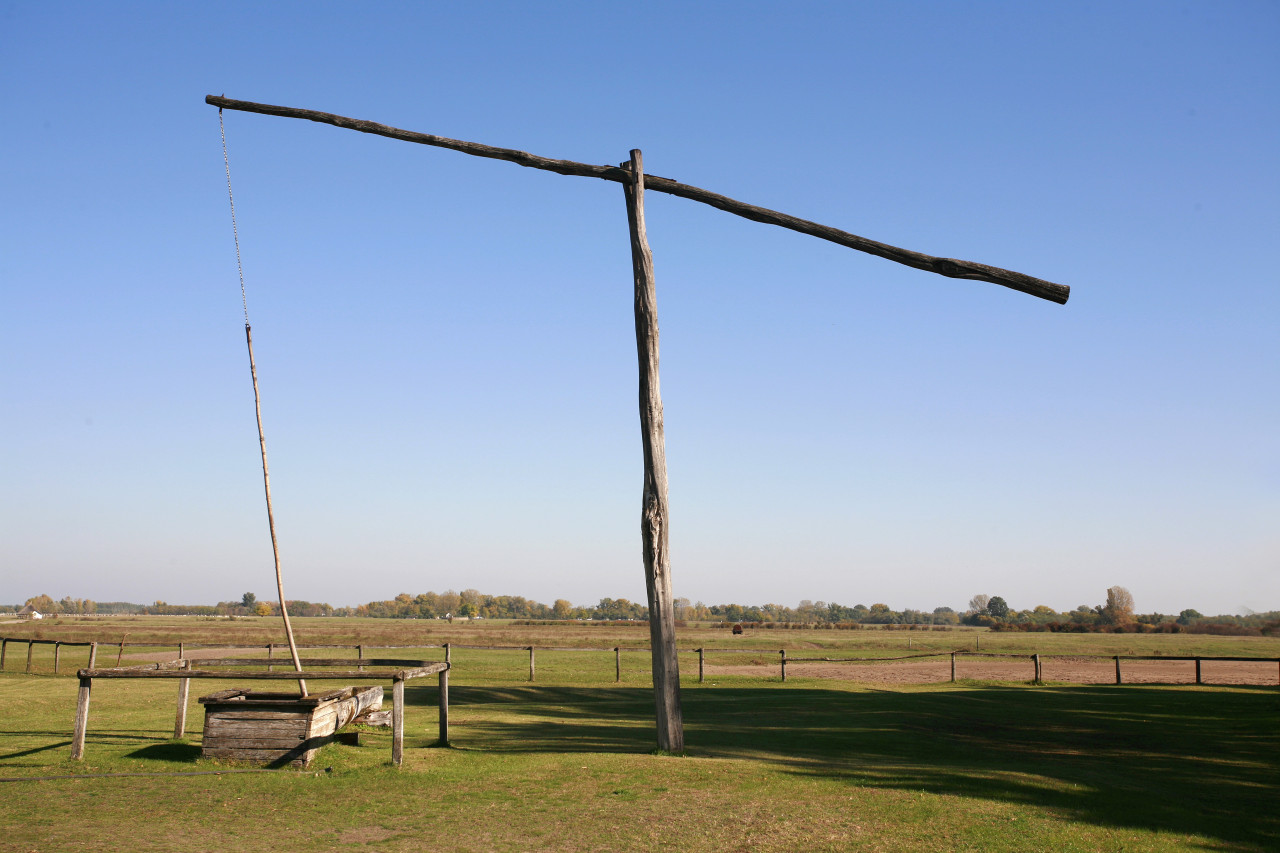
Steps: Szekszárd
Stop in Villány, an important wine-growing region, to taste the very fruity pinot noir and in Szekszárd, known for its delicious red wines.
Recommended baths: Harkány, Siklós, Szigetvár.
La Grande Plaine
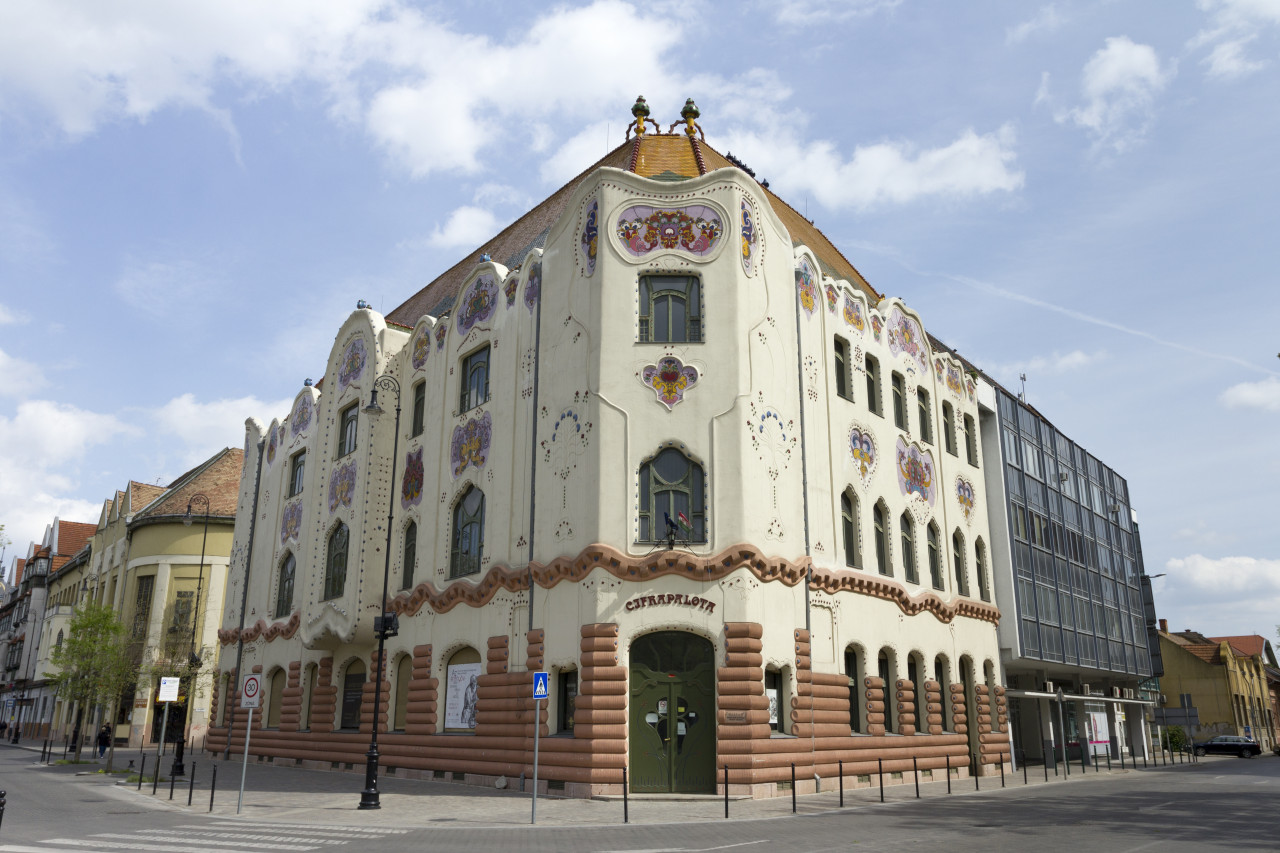
Steps: Bugac
A region that can be visited by car or... horseback. From Szekszárd, enter the Puszta De, a protected natural area covered by swamps, dunes and forests.
The orchard of Hungary

Steps: Békéscsaba
Continue along the road to discover Kecskemét, the "orchard of Hungary" where the famous apricot brandy is made. Take the N5 to Szeged, a splendid city, a major urban centre in southern Hungary. Go through Békéscsaba and Gyula Castle to the northern part of the Great Plain
The Debrecen Baths,
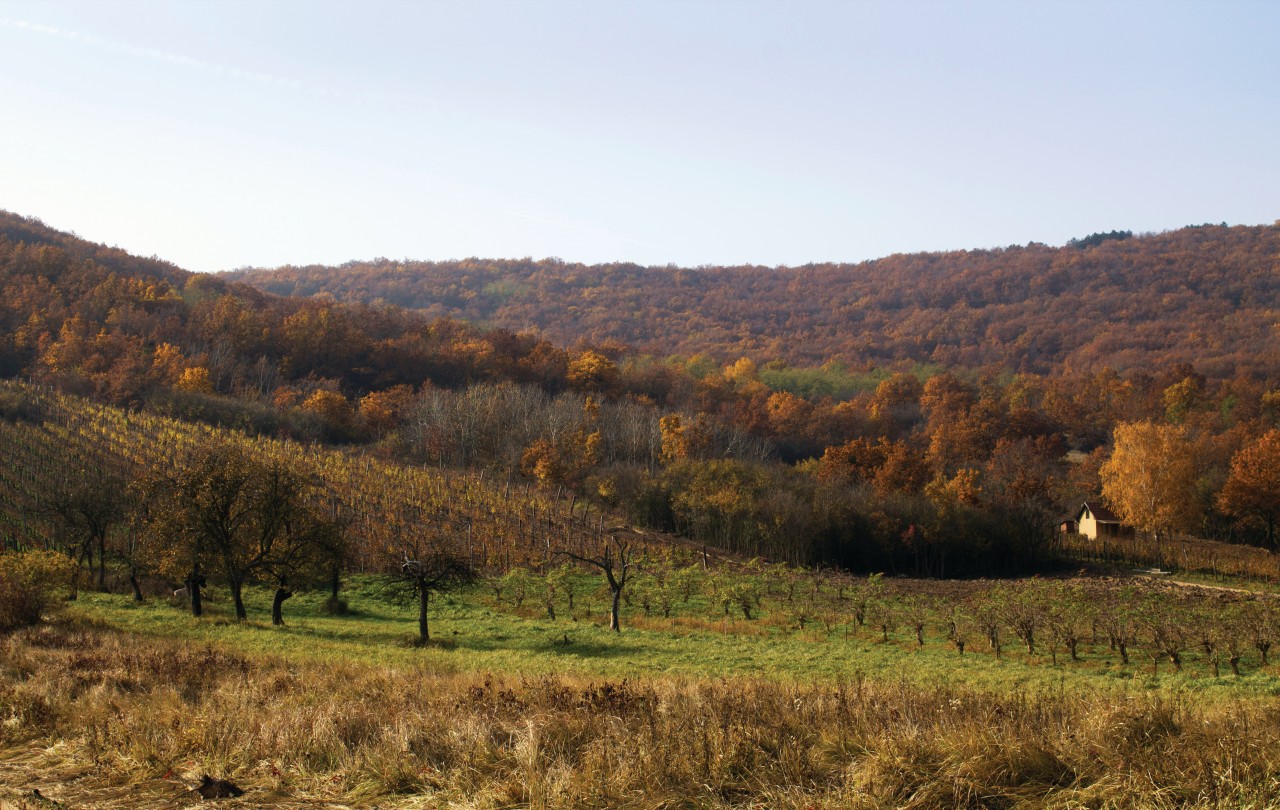
Steps: Debrecen
Debrecen, Hungary's second largest city, a university and industrial centre, is also a centre of religious and cultural diversity. It houses the largest Calvinist temple in Hungary. From Debrecen, road 3 will take you across the puszta from Hortobágy to Tiszafüred. Hortobágy National Park is the oasis of the Hungarian steppe. By coach or by car, you can cross herds of horses.
Recommended baths: Debrecen, Hajdúszoboszló, Szeged, Gyula and Tiszafüred
The Tokaj region

Steps: Tokaj
The Tokaj-Hegyalja wine region includes 28 localities on the southern and southeastern slopes of the mountain. "Wine of kings, king of wines", this region is one of the most touristic in Hungary.
The Northeast
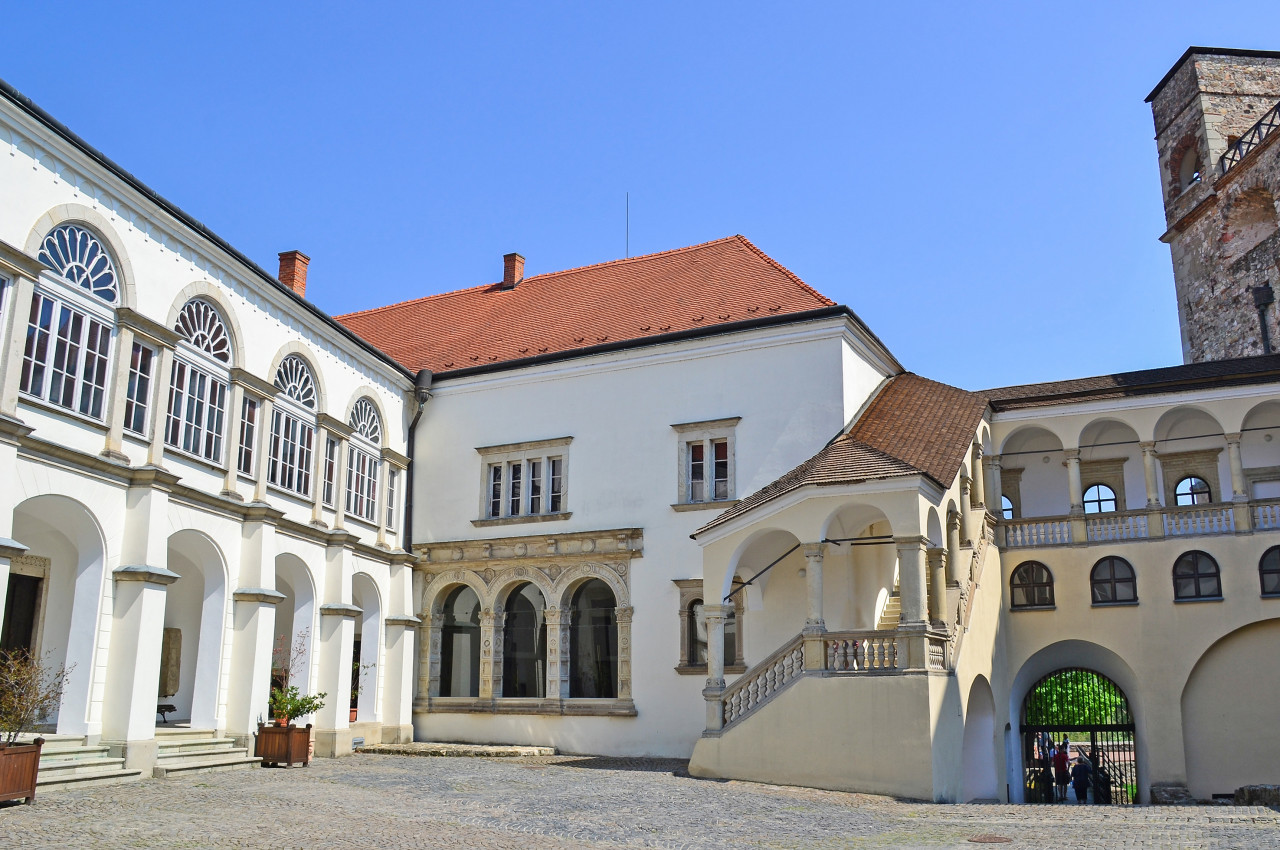
Steps: Sóstófürdő
"Wine of kings, king of wines", this region is one of the most touristic in Hungary. Pass through Mátészalka on the banks of the Tisza and in the far east of Hungary, then through Nyíregyháza and the Sóstófürdo spa to Tokaj and its vineyards
The Northern Mountains

Steps: Aggtelek
From Miskolc, go through Lillafüred to Eger, in the valley where the famous red wine "egri bikavér" is produced. A visit to this charming little town and its fortress is most enjoyable. The Ottoman occupation has strongly permeated the city. From the Bükk Mountains to the Aggtelek National Park and Caves, nature is not to be outdone in the region. Then head for Gyöngyös by the M3 road
Places of interest : CHÂTEAU (EGRI VÁR)
